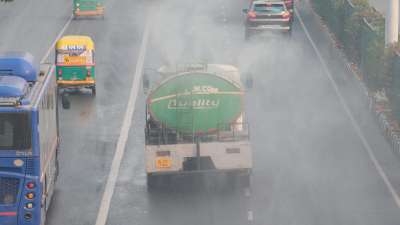Delhi’s air quality has dropped to the ‘very poor’ category, with an Air Quality Index (AQI) of 385 recorded around 8:00 am on Tuesday, according to the Central Pollution Control Board (CPCB). A thick layer of smog enveloped areas like Anand Vihar, Kalkaji, Nehru Place, and Akshardham Temple, worsening visibility and prompting health warnings for residents, particularly those with respiratory conditions. The pollution levels are anticipated to remain elevated if weather conditions do not improve.
In response to the declining air quality, the Commission for Air Quality Management (CAQM) activated the Graded Response Action Plan (GRAP-II) for Delhi-NCR after the AQI fell into the ‘very poor’ category. This plan includes measures such as mechanical sweeping, water sprinkling on roads, intensified inspections at construction sites, and proper disposal of dust. Citizens are encouraged to use public transport, limit personal vehicle use, and avoid dust-generating activities.
Meanwhile, the Yamuna River has also become a focal point of pollution concerns, with toxic foam observed floating near Kalindi Kunj. Dinesh Kumar, an NGO owner who regularly cleans the river, noted the foam’s toxicity and attributed the pollution to untreated sewage being discharged into the river. On a recent visit to the area, BJP national spokesperson Shehzad Poonawalla criticized Delhi Chief Minister Arvind Kejriwal for his government’s failure to address the ongoing pollution crisis, challenging AAP leaders to experience the contaminated waters firsthand.
As smog thickened over the capital, locals expressed their frustrations. Saif, a visitor at Kartavya Path, remarked, “Breathing becomes difficult during these months, especially in October, November, and December. The government is taking steps to combat pollution, but timely action is crucial to prevent future issues.”
With the air quality remaining a critical concern, the CPCB has emphasized that prolonged exposure to ‘very poor’ air can lead to respiratory discomfort and illnesses, underlining the urgency of addressing both air and water pollution in the national capital.







